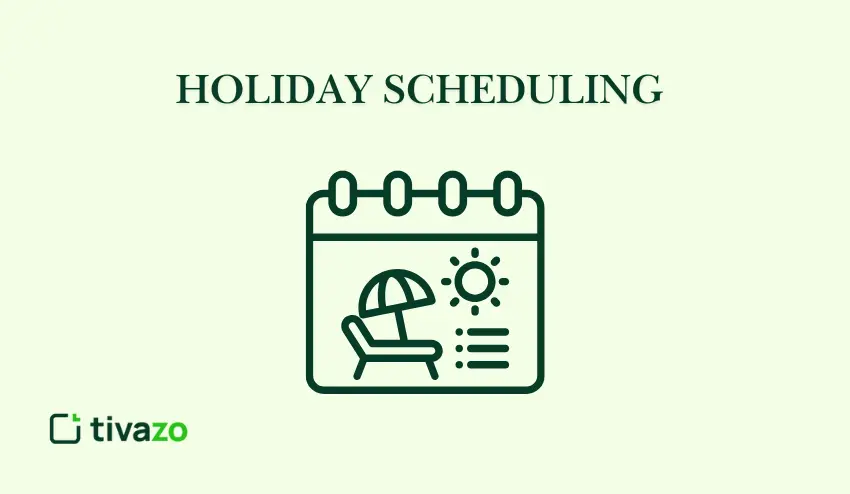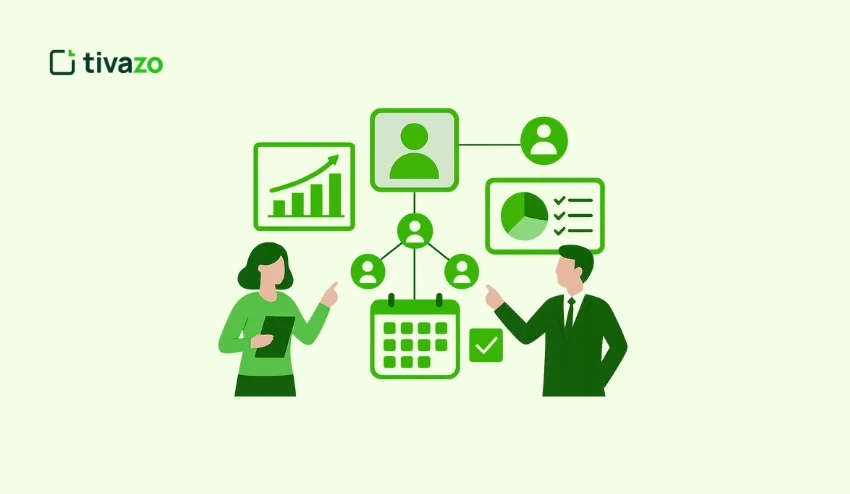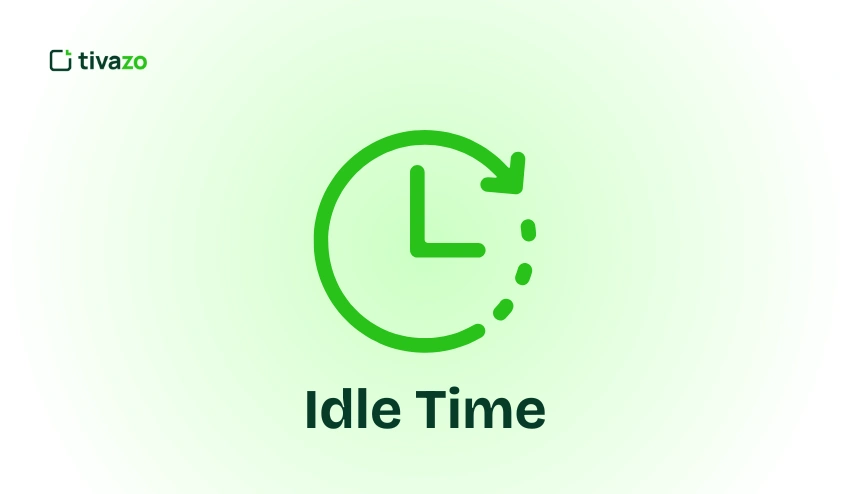The planning and management of employee vacations can sometimes feel like being in a minefield. It’s not uncommon for overlapping vacations, heavy seasons of workloads, and labor law compliance to create issues for HR managers and owners who are just trying to fairly and effectively manage the vacation schedule. With no structure around planning, businesses risk harming employee satisfaction, creating staffing outages, and bottlenecking operations at peak times.
Holiday scheduling does not involve just assigning valued days off; it’s about planning around productivity, morale, and compliance. Organizations that have policies, effectively utilize the right tools, and support good communication processes, have less friction between employees and organizational goals. The pace and contemporary work environment require effective vacation planning for employees to enhance employee engagement, operational efficiency, and pleasure in the workplace.
This article explains simple changes, practical advice, and holiday scheduling tools you can use to improve vacation planning and satisfaction. You’ll learn the planning basics, and some practical advice, and apply holiday management software such as Tivazo to improve vacation scheduling efficiencies and overall vacation satisfaction for HR managers and owners.
What is holiday scheduling?
Holiday scheduling refers to the planning and arrangement of employees’ time off in relation to public holidays, company holidays, and employees’ plans for their individual vacations. Holiday scheduling allows operations to run effectively while ensuring that employees have the opportunity to take vacation time. Effective holiday scheduling invites employees to be away from work while maintaining workforce availability, compliance, and employee engagement.
Key components of holiday scheduling:
- Public and Company Holidays: Nationally recognized holidays mandated by law and any specific days provided by the company.
- Employee Candidate requests and availability: Requesting employee availability early to ensure that one’s needs match with employee vacation requests.
- Affordability/Compliance to law: Scheduling to remain compliant with labor law, such as paid time off, statutory holidays, and working with part-time or remote workers.
Why Effective Holiday Scheduling Matters
Establishing a strategic holiday schedule is more than simply marking days on a calendar. For human resources managers or business owners, it has direct implications for employee happiness, productivity, and compliance. When you schedule holidays effectively, you keep your team engaged, the operations running smoothly, and allow for the least amount of conflict.
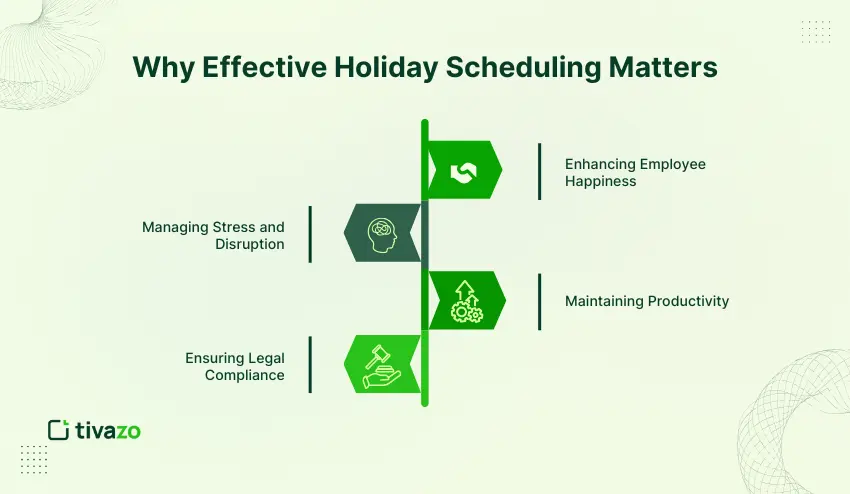
1. Enhancing Employee Happiness
One of the things that employees appreciate is transparency and fairness in holiday scheduling. An effective holiday schedule shows that you respect their time off preferences, decreases employee frustration, and helps to ensure a productive workplace culture. Whenever employees feel that time off is respected, their full engagement and morale will increase.
2. Managing Stress and Disruption of Last Minute Exiting of the Office
Absent effective planning, your employees can leave for the holiday season without you being ready/without your team managing the last-minute scheduling/balancing of shifts/days off. The stress of unanticipated holiday requests or offered vacation cohorts at once will be decreased.
An effective holiday schedule is probably the most stress-reducing and disruption of last-minute inconvenience, by management, which refocuses HR and team leaders on the priorities of the day, calling existing obligations, absences as an unmanageable imposition and responsibility be contagious.
3. Maintaining Productivity During Peak and Low Seasons
Holidays typically arch into busy or slow sustained workload information; chronic overload of chaos resulting in a pile up of constant completed work. In attempting to stay up to date, responsibilities and projects are not completed at the most defendable capacity. By anticipating and allocating workload, planning for holidays/schedules, the business continues without too much disruption.
4. Ensuring Legal Compliance and Conflict Avoidance
Labor laws cover holidays, paid leave, and part-time work schedules. Non-compliance can include legal and monetary consequences for your company. A formalized holiday schedule allows managers, particularly HR managers, to ensure that all employee leave entitlements are tracked and also avoids potential conflicts that arise with overlapping requests and days when the company is already understaffed.
Example. A mid-sized marketing agency used an open holiday calendar and early leave requests. In doing this, they ensured no double-booking took place for their December peak, while maintaining employee satisfaction and client deliveries.
Common Challenges in Holiday Scheduling
Even the best HR Teams face hiccups when ensuring employee holiday coverage. Being aware of these problems enables managers to plan for them and minimize disruption to operations.
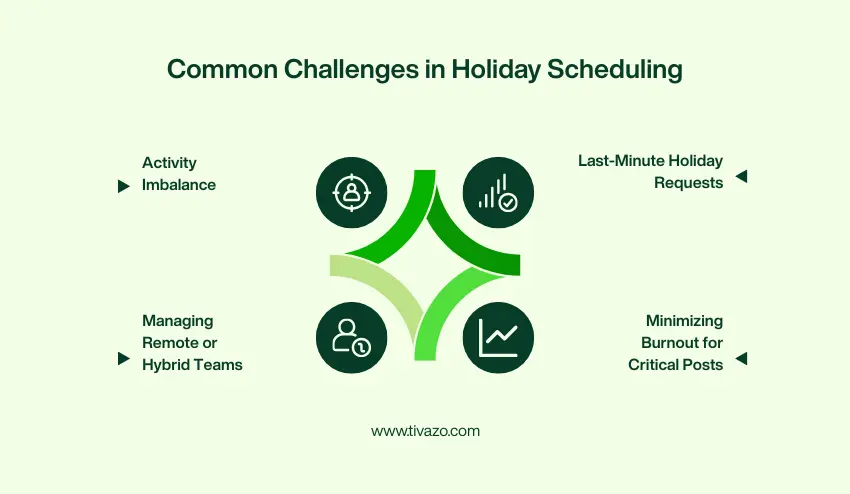
1. Activity Imbalance
Without directed planning, some teams or employees may inevitably take more time off than others. This can lead to resentment and burnout among employees who are picking up more work during the busiest holiday periods.
2. Last-Minute Holiday Requests
Employees sometimes place last-minute requests to take time off work, which can have implications for any planned holiday coverage or projects with upcoming deadlines. However, with established policies of notice, earlier submissions can help mitigate any last-minute downtime.
3. Managing Remote or Hybrid Teams
When coordinating holiday schedules, this can make it complex, as employees can either be working remotely or hybrid environment. This requires consideration of time zones and work patterns to ensure that work is able to be completed, or be noticed if the workflow is broken.
4. Minimizing Burnout for Critical Posts
Some roles are more important than others to the daily functions of a team. If critical roles are not consulted when planning holidays, it can lead to burnout of employees in these essential roles, and subsequently, productivity might be lessened as a result.
Tips for Effective Holiday Scheduling
Developing a fair and effective holiday schedule doesn’t have to be difficult. By utilizing these real-life recommendations, HR managers and business owners will create coverage and fairness and retain employee satisfaction.
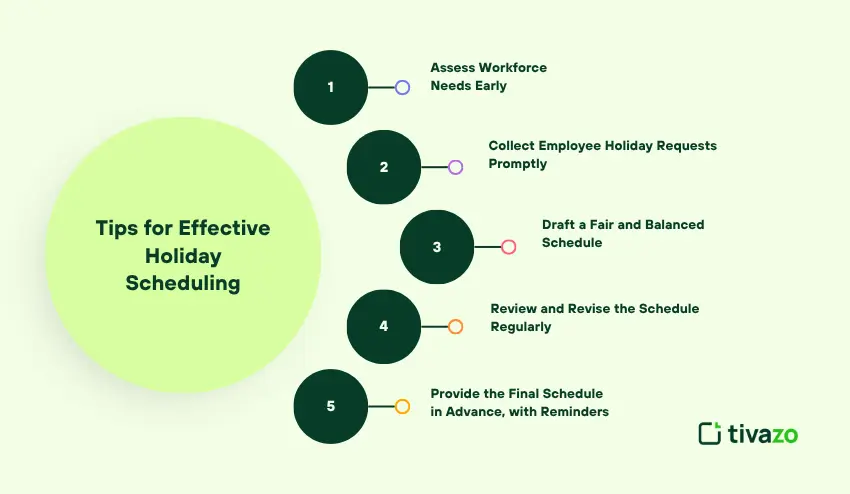
Tip 1: Assess Workforce Needs Early
Before agreeing to calendar requests, complete a weight measure to see how many employees will be off and when. Assessing demand or coverage needs serves as a safeguard to avoid being short-staffed.
Tip 2: Collect Employee Holiday Requests Promptly
Encourage your employees to submit their desired vacation requests as soon as possible. The sooner they request, the best opportunity for you to be fair and avoid scheduling conflicts.
Tip 3: Draft a Fair and Balanced Schedule
When building a schedule, take into account your employees’ preferences in dates and continued business needs. Developing fairness (addressing popularly requested holidays) over the length of employment will help factoring, ultimately arriving at a balance with the workload across departments.
Tip 4: Review and Revise the Schedule Regularly
Be sure to periodically review the draft of your schedule to check for conflicts or gaps, adjust the schedule as necessary, and notify employees promptly. The goal is to give the employee as much notice as feasible to minimize last-minute panic.
Tip 5: Provide the Final Schedule in Advance, with Reminders
Provide the final schedule to employees in advance of major holidays, while also providing reminders. Clear communication of the original schedule gives the employee the best opportunity to assist in reducing confusion.
Tools and Software for Holiday Scheduling
Managing holidays manually can be time-consuming and error-prone, especially for larger teams. Leveraging the right tools ensures accuracy, transparency, and efficiency in scheduling.
Calendar Software
Tools like Google Calendar or Outlook allow teams to visualize holiday schedules, share calendars, and receive reminders. They’re simple to use and great for smaller teams or basic scheduling needs.
HR Management Systems
Platforms such as BambooHR, Workday, and Zenefits provide comprehensive leave management, tracking employee PTO, and generating reports. These systems often include automated notifications, approval workflows, and compliance tracking.
Time-Tracking and Scheduling Platforms
Specialized software helps manage shifts, overlapping requests, and attendance records. These platforms simplify complex schedules and reduce administrative overhead.
Comparison Table Suggestion:
| Tool/Software | Key Features | Pros | Cons |
|---|---|---|---|
| Google Calendar | Shared calendars, reminders | Free, easy to use | Limited automation |
| BambooHR | PTO tracking, approvals | HR-focused, reporting | Paid subscription |
| Workday | Leave management, analytics | Enterprise-ready | Expensive |
| Tivazo | Holiday calendar, leave tracking | Intuitive dashboard, reporting | N/A |
How Tivazo Helps Simplify Holiday Scheduling
Overseeing employee vacations can easily become a maze, especially with even small teams. Tivazo brings an intuitive solution to holiday scheduling and leave management for HR managers and business owners. Its seamless holiday integrated calendar allows organizations to see all approved and/or pending leave in one easy-to-view calendar view. By tracking public holidays and employee leave, everyone can have clarity across department lines to make the scheduling process easier.
In addition to centralizing management of holidays, Tivazo provides seamless tracking of leave. HR pods can track vacation days, PTO days, and any other absence with ease to ensure equitable distribution of leave and adherence to company policies. This support of the administrative burden frees time for the managers to focus on strategic efforts rather than trying to keep all of the juggling schedules straight.
Tivazo has also recently made improvements to the holiday calendar, with an eye on ease of use and ease of visibility. The upgraded calendar is now optimized, providing better performance and ease of use to allow all teams to see scheduling across departments and plan better. With an easy-to-use, reliable solution in use, businesses can more efficiently manage holidays while retaining operational flow and employee satisfaction.
Legal and Compliance Issues.
- Compliance with labor laws: Make sure that the scheduling of holidays is in accordance with the legal provisions to minimize the legal penalties and fines.
- Monitor paid holiday balances: Properly maintain the balance of every employee in terms of PTO, vacation days, and accrued holiday.
- Take into consideration the rules of public holidays: When developing schedules, take into account not only national/public holidays but also days off of the company.
- Adjust schedules according to various entitlements, working hours, or alternative schedules: Accommodate part-time and remote workers.
- Keep a clean record: Have systematic systems to monitor leave requests, approvals, and entitlements to avoid conflicts and also to ensure fairness.
- Share policies: publish leave regulations and schedules to employees to reduce confusion and make sure everyone is adhering to them.
Best Practices for Holiday Scheduling
Proper holiday scheduling is a balance of planning ahead, communicating clearly, and being equitable. HR managers and business owners can adopt these best practices to promote good scheduling and keep everyone happy:
- Plan ahead: Start collecting requests for time-off work and creating schedules as soon as you can to avoid conflicts from time-off requests at the last minute.
- Rotate holidays evenly and with equity: To avoid claims of favoritism and resentment, be sure to schedule as equitably as possible the busiest holiday times between employees and date ranges.
- Be flexible: Allow for changes in holiday scheduling where having to use changes does not create a disruption of getting a team member to provide service to a customer or essential business needs.
- Use analytics: Utilize historical records to note trends in time-off requests and absenteeism, as well as workload to provide data for scheduling.
- Communicate clearly: Provide the team with a final schedule as well as reminders to all team members.
Using these principles can promote operational continuity, improved morale, and fewer holiday scheduling complications through the rest of the year.
Conclusion
Scheduling holidays is not simply an exercise in marking off days on a calendar; it’s an intentional process that can affect employee happiness, productivity, and compliance. Planning as early as possible, communicating clearly, and utilizing the right technology to put this into practice will help HR managers and business owners develop holiday schedules that are fair, transparent, and efficient.
Utilizing technology will allow HR managers and business owners to simplify holiday management by centralizing leave management so all employee requests of holiday requests are visible and easily tracked. Pairing technology with best practices and pre-planning options will help ensure HR redirects scheduling for busy times, while positively influencing employee morale.
Holiday scheduling is an investment of time and energy, which will help manage the stress and conflicts that can come from holiday scheduling, but also influence workplace culture and operational efficiency benefits throughout the year.
